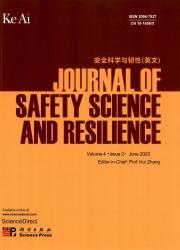Hot molten metal droplets with high fire hazard can easily ignite combustibles. Molten metal kinetics on the surface of a combustible material directly affects the ignition likelihood. Existing research focuses on the behavior of droplets during collisions, rarely addressing the ignition of combustibles by hot metal droplets. Here, the mechanisms of aluminum and copper droplets impinging on and igniting extended polystyrene (EPS) foam boards at different velocities were investigated. The relationship between the critical ignition temperature and impact velocity of droplets with diameters of 6 and 8 mm was experimentally studied for aluminum droplets; the critical ignition temperature non-monotonically depended on the impact velocity. For copper droplets, the relationship between the ignition probability and the impact velocity of droplets with diameters in the 3.5–7 mm range was experimentally studied. The most obvious difference between the two droplet ignition types was that the impact of copper droplets was accompanied by intense splashing, and the fragmentation extent positively correlated with the impact velocity. It was challenging to ignite using completely broken copper droplets. Droplets with the diameter of 5 mm were the most dangerous under the experimental conditions of this study, because the foam could still be ignited at higher impact velocities. Numerical simulations suggested that the main factors explaining the critical ignition temperature of aluminum droplets were gas mixing and splat cooling. The main factor affecting the ignition of copper droplets was fragmentation, and experimental observations were explained using non-dimensional droplet fragmentation theories.


